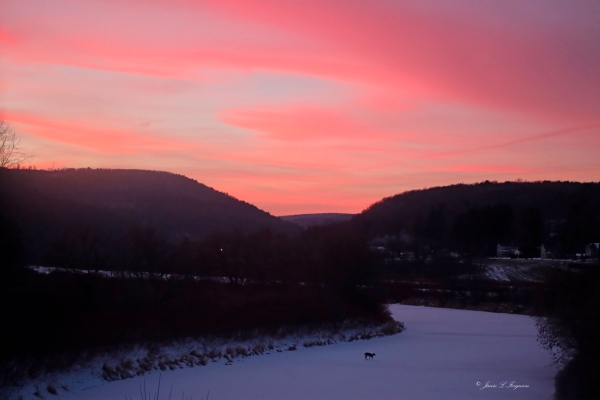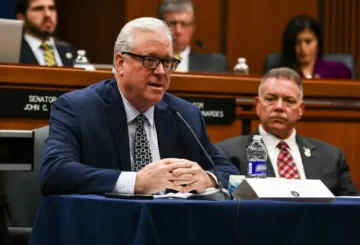“New, fast-tracked, state-dictated process would overrule local zoning”
A weekly COLUMN by NY State Senator Tom O’Mara,
The beginning of November reminds us that we are fast approaching a holiday season when one of the time-honored traditions is to gather around the table to share a meal, express thanks, and count blessings in the company of family, friends, neighbors, and sometimes even the community at large.
It’s a chance, as well, to reflect on the contributions of farmers and the entire agricultural industry here at home in the Southern Tier and Finger Lakes regions, throughout New York State, and across America.
One year ago, the state comptroller released a report, “A Profile of Agriculture in New York State,” that’s worth revisiting.
“Agriculture is an important part of New York State’s economy, and farmers make significant contributions to the State,” State Comptroller Thomas P. DiNapoli highlighted in that November 2024 report (the full report can be found here: https://www.osc.ny.gov/files/reports/pdf/profile-of-agriculture-in-nys.pdf), “In New York’s rural counties, farming can be a significant driver of the regional economy, spurring a suite of support businesses supplying equipment, repair services, seed and soil conditioners and veterinary services, as well as sustaining employment.”
The latest figures from the federal Department of Agriculture show that farming is practiced in every county in the state. Nearly 31,000 farms and farmland account for over 21 percent of the state’s area. New York’s agricultural sector contributes $2.7 billion to the state’s gross domestic product and directly supports over 163,000 jobs. In short, the industry is a foundation of the statewide economy and the food supply networks vital to the future.
In other words, farming and agriculture remain the anchor of a way of life that has long defined and sustained so many communities and regions. New York has many agricultural products that consistently rank in the top three nationwide, including maple syrup, grapes, wine, red table beets, apples, cabbage and milk, yogurt, and cheese.
Among other good news, the comptroller’s report found that:
- Agritourism and recreation in 2022 saw the largest increase in farm-related income, a 78% jump since 2012.
- Research from Cornell University found that farming and related supporting businesses directly supported 163,148 jobs in New York in 2019.
- In 2022, New York’s farms paid a total of $6.2 billion in expenses, an increase of $1.9 billion from 2017. From 2012 to 2022, hired labor expenditures grew by 68%, far surpassing other categories.
Yet, challenges clearly remain and there are concerns on the horizon. According to the comptroller’s findings, despite economic growth, between 2012 and 2022, the state lost close to 14% of its farms and over 9% of farmland. New York is losing farms and land at a faster rate than the U.S. and all neighboring states except Connecticut (farms) and Massachusetts (farmland). Furthermore, the overall decline of farmland is troubling, as conversion to other uses, particularly residential, commercial or industrial, may prevent its use for farming in the future. This includes 1,728 acres located in agricultural districts classified as solar electric generation facilities.
“New York’s diverse farms are an essential part of the state’s economy, but there are increasing challenges that are changing the agricultural landscape,” the comptroller warned.
At a state Assembly hearing in Albany early last week focused on the challenges facing future farmers and how the state needs to respond, members of the Agriculture Committee heard testimony from farmers and other agricultural advocates and leaders from around New York.
From Albany’s WTEN-TV, “Over 90% of senior farmers—managing about two million acres of land—have no successor, so the land will change hands in the next decade. And the state lost over 363,000 acres of farmland—over 5%—between 2017 and 2022…that’s three times the acreage the state has permanently protected since 1996. How to attract new farmers while preserving land for food production? Witnesses identified consistent challenges like competition from solar developers for farmland and the difficulty of navigating government systems.”
A related development out of Albany last week deserves scrutiny for its potential impact on one of the key concerns raised at the Assembly hearing and the overall, ongoing alarms being sounded as a result of the state’s rapid implementation of far-reaching climate actions: the loss of prime agricultural land to solar developers.
Specifically, the state Office of Renewable Energy Siting and Electric Transmission (ORES) released revised regulations “for the environmental review, permitting, and siting of major renewable energy facilities and major electric transmission facilities under the Renewable Action through Project Interconnection and Deployment (RAPID) Act.” The RAPID Act was enacted in 2024 to authorize ORES to effectively streamline the siting permit review process. The stated goal of the measure was to “balance transparency with environmental protection and the need for fast decision making, while continuing to be responsive to community feedback.”
The newly revised regulations are now subject to a 45-day public comment period, until December 8th, and it bears watching. When the RAPID Act was first approved by the Democrat-led Legislature and signed into law by Governor Hochul, many of us voiced opposition that the new, fast-tracked, state-dictated process would overrule local zoning, unreasonably expand eminent domain, jeopardize natural resources and farmland, and undermine local control and the will of local residents and communities.
We remain concerned that the implementation of the RAPID Act could emerge as an additional threat to prime agricultural land in upstate, rural regions. Details on the public current comment process can be found here:
Approaching the start of a new legislative session in January, it will be important for New York’s lawmakers and policymakers to renew a strong commitment to ensuring that state-level actions will not undermine an industry and a way of life that has defined the regions we represent.
We cannot afford to change the face of New York State agriculture as we have known it for generations. We can’t risk the future of high quality, local food production or take steps that could spark the loss of more family farms and the livelihoods these farms support throughout hundreds of local economies.







